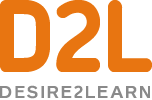Featured on Brightspace by D2L Community Page

5 Things Instructors Should Know About Peer Assessment
Peer assessment can not only provide students with a more engaging educational experience, but also improve an instructor’s overall assessment tactics. Evidence shows that including students in the learning and teaching process has benefits to the assessor and the assessed. As the research paper The Effects of Feedback Elaboration on the Giver of Feedback suggests, “when students engage in evaluative activities normally reserved exclusively for the teacher, they stand to see cognitive benefits.” For example, students can better understand their own work when they are encouraged to articulate an understanding of their peers’ work against the instructor’s rubrics. The pedagogical practice of peer assessment has been around for more than half a century, but in recent years, new education technologies have enabled an even higher level of collaboration and communication between students. Here are some of the key benefits that instructors should know when considering implementing a peer reviewing program.
More accurate assessments
Instructors can go beyond simple, multiple-choice quizzes and exams to allow students more freedom to express the evidence of their learning. There is also less risk of cheating on quizzes and exams since more stress is placed on proving a learner’s deeper understanding of material. Peer assessment encourages critical analysis and promotes engagement with learning, which can ultimately have a positive impact on student success.
Learning can be continuous
Traditionally, once an assignment has been handed in and graded, the process is over. Using peer assessment, instructors can encourage ongoing conversation around assignments to get more long-term value from each. When peers collaborate in a learning management system (LMS), they are able to continue communication about a piece of work for weeks, or even throughout the year. Students can refer back to comments and critique that can help them with ongoing course work.
Reduced burden on instructors
Providing personalized assessments can be challenging for classes of 50, let alone 500. Using technology, instructors can efficiently monitor student interactions and intervene when convenient so they can get the best of both worlds: an extended and valuable discussion around a student’s work, while also reducing the amount of time it would take for an instructor to provide consistent feedback. At the appropriate moment in the process, instructors can intervene, more confident that the material they’re reviewing is a polished version. In fact, assessment can pass through the LMS with zero instructor intervention. Or if preferred, instructors can perform spot checks along the way, or wait until a final draft version is created.
Creating incentives can supercharge the program
A concern of educators is whether other students will embrace a peer assessment program and therefore provide a valuable critique of their peers. One technology, Peerceptiv, encourages deeper evaluation by incentivizing students to make more accurate assessments. In fact, a portion of their grade can be dedicated to how effective their assessments have been. Providing students the tools to be able to assess the assessment means that students can be rewarded for accuracy and can increase the effectiveness of the program.
Leveraging learning technology
Using a learning management system, instructors can define the assessable requirements within a rubric. The technology allows peers to easily assess and comment on specific strengths and provide ratings that are linked to a matrix-style rubric. A mobile-ready learning platform enables students to participate in assessments from anywhere, at any time, and from any browser-enabled device. And because all interactions and activities are integrated into the LMS, it’s easy for instructors to tie moments of learning to their gradebook.
Providing a high-quality education is paramount to instructors and institutions. But the key behind technology is to reduce the amount of work required. Learn more about how Peerceptiv can provide the tools that seamlessly integrate into the Brightspace platform to enhance and support an online peer assessment program, while reducing the amount of work needed to enable effective assessment programs.